
Opened the car door and heard an unpleasant creak? This is your car signaling to you that it is high time to oil the door hinges.
After all, we most often do not think about this important matter until the door creaks and starts to get on our nerves. To begin with, let's find out why this creak appeared at all and how to lubricate the car door hinges?
The first reason is that many of us open the doors in the car more often than at home. During a single trip home from work, the driver, on average, opens the door to the car at least four times. And then this statistic is true if a person was driving straight home from work.
And how many trips can there be per day, when he opened - closed the door at the beginning of the journey and did the same at the end, or, for example, drove into the store, or forgot something in the car and returned. Well, you understand, in general.
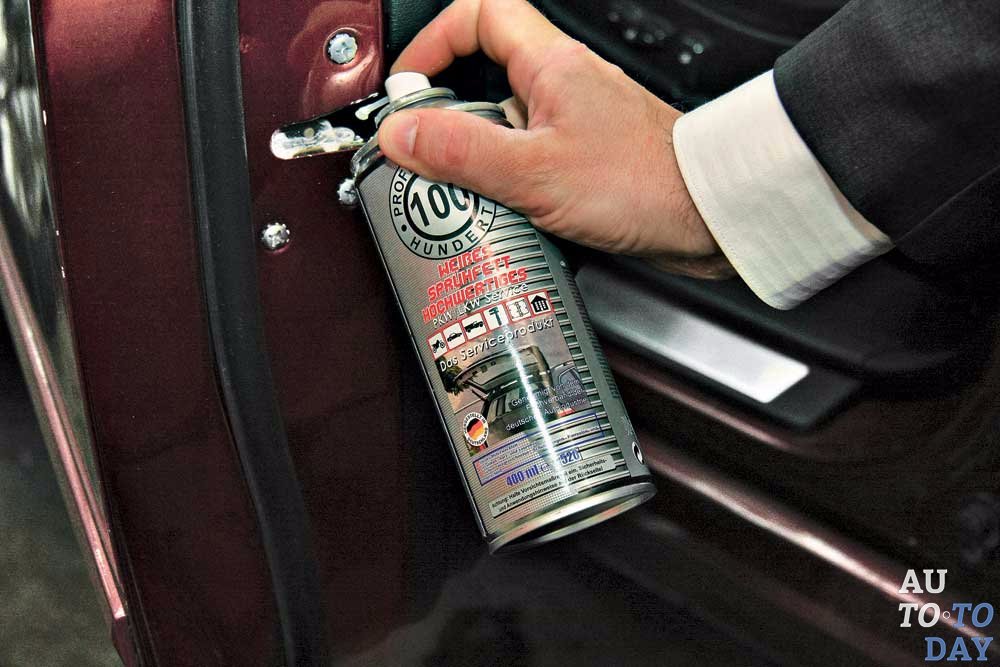 Let's find out how to deal with the problem. To begin with, it is better not to bring it to its appearance at all. That is, it is better to make a rule for yourself: lubricate the doors periodically, without bringing the situation to a critical one. But this is, of course, ideal. In practice, there is “truth” in our psychology: until the roasted rooster pecks ... and so on.
Let's find out how to deal with the problem. To begin with, it is better not to bring it to its appearance at all. That is, it is better to make a rule for yourself: lubricate the doors periodically, without bringing the situation to a critical one. But this is, of course, ideal. In practice, there is “truth” in our psychology: until the roasted rooster pecks ... and so on.
First of all, the cause of this problem is unfavorable weather conditions (strong wind, snow, rain) plus the frequent use of doors and the wear of rubber bands, which are responsible for the tight connection of the doors to the car body.
So, the door in your car began to creak. What to do? Run to a car shop or use improvised means - different oils that are stored in an assortment at home on a utility shelf or in a garage and are used in everyday life?
Previously, motorists did not particularly think about this issue, the hinges were lubricated with literally everything that came to hand. Vinegar, kerosene and even iodine were used. We do not recommend you to use such extreme means now, it is better to choose a more reliable and repeatedly proven tool that can penetrate the gaps between the rubbing parts of the door hinge and create a film that prevents further friction.
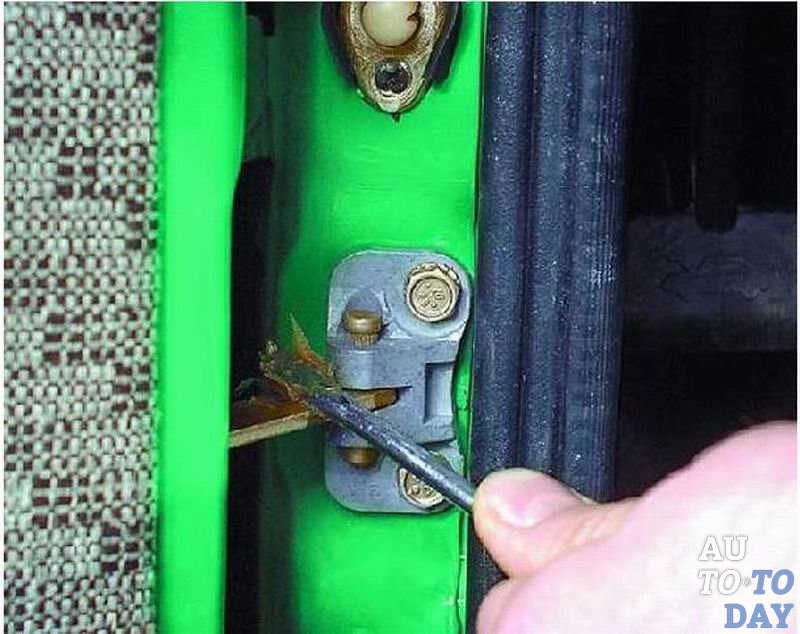 Each of the motorists in his own way refers to his car. For some, a car is only a means of transportation, and for some, it is an iron friend that needs to be taken care of regularly.
Each of the motorists in his own way refers to his car. For some, a car is only a means of transportation, and for some, it is an iron friend that needs to be taken care of regularly.
Most often, car maintenance consists in regularly maintaining the gloss of the plastic and paintwork of the car, as well as maintaining cleanliness in the cabin. But this is an insufficient level of vehicle maintenance, since there are still a lot of elements in it that can become a source of big problems in the future if they are not properly cared for.
These elements include locks, hinges and car door seals. The maintenance of these machine elements consists in regularly checking the lubrication level. If you find that the lubricant in the presented mechanisms is running out, then it needs to be urgently updated.
And here, for many motorists, the question immediately arises as to which lubricant is more suitable for this or that mechanism, since one lubricant is needed to lubricate locks and hinges, and completely different for car door seals.
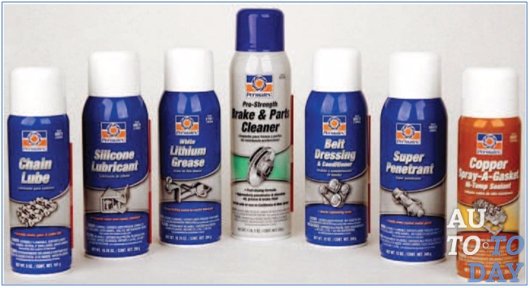 Lubricant is a substance that has a certain base with the addition of various additives and other additional substances in order to give it more qualities.
Lubricant is a substance that has a certain base with the addition of various additives and other additional substances in order to give it more qualities.
As a rule, the composition of the lubricant includes such substances:
- additives;
thickeners;
Lubricating oils.
There are several types of lubricant for various automotive mechanisms. So, grease for automotive mechanisms is divided into the following types:
- liquid lubricant, the so-called oil;
Semi-solid or plastic;
Solid. Also, the lubricant is divided according to the method of application: - motor; - transmission; - universal.
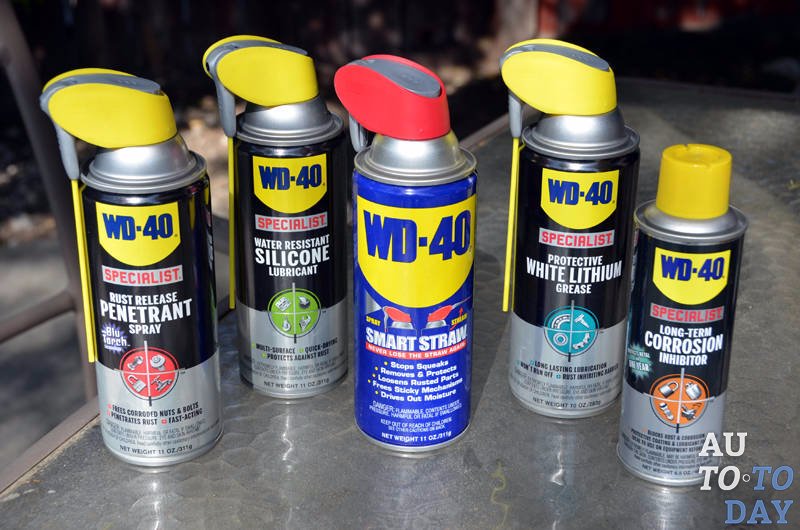 Unfortunately, most of us run to the service or specialty stores for aerosols, lubricants and other car care products only after some kind of problem has appeared.
Unfortunately, most of us run to the service or specialty stores for aerosols, lubricants and other car care products only after some kind of problem has appeared.
And only a few do not allow these complications due to proper care of their car. Indeed, even a non-specialist knows that rubbing parts are subject to more intense wear, and the hinge mechanism consists of just such elements.
So why wait for a squeak or jam to appear and then try in every possible way to eliminate these breakdowns, if you can simply regularly, at least once a year, process the parts with a special tool and never encounter the above problems. In addition, weather conditions also have a negative impact on the condition of locks and hinges.
Rain, snow, high humidity, temperature changes - all this contributes to the occurrence of corrosion and more intense wear. And, as a result, the doors do not close tightly enough, and after a while they begin to sag.
Also, for sure, everyone, even if he himself has not come across, has heard about how locks refuse to work, especially at very low temperatures. The problem arises because of the liquid, which in one way or another gets inside, and then freezes, tightly fettering the rotary mechanisms. High-quality lubricant for car hinges and locks will help to avoid all these troubles.
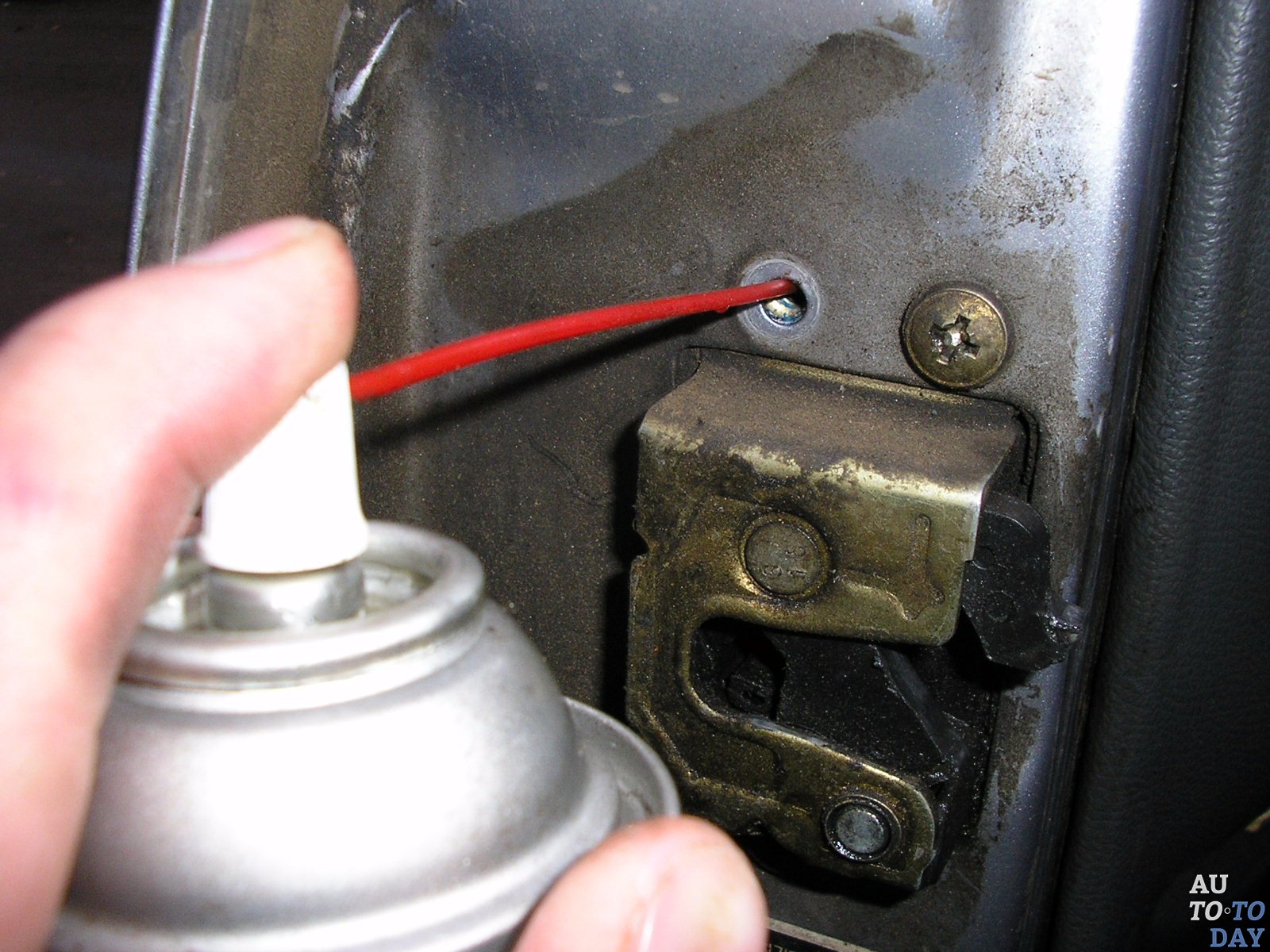 It's time to figure out how to properly eliminate the unpleasant creak of car doors. You can do this during the next scheduled maintenance or by simply stopping by a service station, or you can fix the problem yourself.
It's time to figure out how to properly eliminate the unpleasant creak of car doors. You can do this during the next scheduled maintenance or by simply stopping by a service station, or you can fix the problem yourself.
Loops usually creak, that is, they are a source of annoying sound. To begin with, make sure that all door hinges are free of grease, perhaps those that you rarely use, there is enough grease and there is no need to reprocess them. However, if there is grease, but there is a layer of dirt on it, it is better to re-process such a loop.
After inspection, remove any dust, dirt and remaining grease from the surface. Then you need to treat the hinges with grease, it is sold in stores, but you can use Litol or Solidol(they are no worse and many are even more familiar with foreign or unknown analogues).
With this grease, treat the areas that rub against each other, you do not need to touch the rest of the parts. It is important to thoroughly clean the hinge elements from dirt, otherwise further work will be done in vain!
 After all the preparatory work is completed, treat the surfaces with a special tool. You can apply it with a brush or use a syringe, but usually modern lubricants are sold in the form of a spray, which is dozens of times more convenient. In this case, you just need to spray the substance from the can onto the loops.
After all the preparatory work is completed, treat the surfaces with a special tool. You can apply it with a brush or use a syringe, but usually modern lubricants are sold in the form of a spray, which is dozens of times more convenient. In this case, you just need to spray the substance from the can onto the loops.
Masters praise the remedy "Molikoth Multigliss". It is suitable for all cars, combines, in addition to the properties listed above, also resistance to weather extremes. But even some twenty years ago, a variety of improvised means were used as lubricants, including kerosene, acetic acid, and even iodine, which is available in every first-aid kit.
But these times are far behind, and today the choice of special chemicals is quite wide. Let us consider what properties they should have for each element separately. The materials used for these purposes must be able to easily penetrate into the gaps formed between two rubbing elements and create a protective film on their surface.
Lubricants for locks should not be afraid of low temperatures, have excellent anti-corrosion properties and a minimum coefficient of friction. It is also very important that they are resistant to washing off, do not exfoliate with subsequent oily secretions and, of course, have a long-lasting effect.
 Still, despite the fact that today there are many options for how to lubricate car doors, you need to choose a product, guided no longer by pricing, but by the quality of the product. So, silicone lubricants for locks have proven themselves well, and hinges can be treated with a special Liqui Moly spray or well-known WD-40.
Still, despite the fact that today there are many options for how to lubricate car doors, you need to choose a product, guided no longer by pricing, but by the quality of the product. So, silicone lubricants for locks have proven themselves well, and hinges can be treated with a special Liqui Moly spray or well-known WD-40.
We have already found the source of the unpleasant sound - the door hinges. Now you need to decide how to properly "cure" them. We have already removed the dirt from the rubbing surfaces. Let's move on to lubrication. To do this, we need to help the agent penetrate into all the slots of the loop, and at the end lubricate the limiter. Then we go directly to the loops themselves.
No need to fill the loops on top! A special container is provided for their lubrication. It is located under the cap. Grease must be poured there, and then close this container with a cap. In order for the lubricant to be evenly distributed over the hinges, you need to open and close the doors at least ten to twenty times.
If the creak does not disappear, perhaps you did not clean the surfaces so thoroughly or lubricated not all the hinges., as an option, the door could already sag, and its lubrication did not save the situation. In general, instead of guessing on the coffee grounds.
They will be able not only to find out what is the cause of the problem. but also quickly eliminate it. When the lubricant for the car doors is selected and purchased, we proceed directly to the workflow. Of course, you can take the path of least resistance and just spray the keyhole with an aerosol, but such an action will not give the maximum result.
So you have to disassemble the entire locking drive. To do this, of course, you need to remove the locks. Taking the open-end wrench, unscrew the bolt through which they are attached. Then you need to move the door handle to the side opposite from the keyhole and dismantle it.
It is possible that it will not be removed immediately, then you need to swing it a little in different directions. There are two levers inside the door, so they need to be well lubricated, in addition, all moving elements of the handle and the lock from the inside are processed. You can get to it by removing the protective plastic cover.
But in order to know the answer to the question of how to eliminate the creak of car doors, you should familiarize yourself with the method of lubricating the hinges, since it is often problems with them that contribute to the appearance of this unpleasant sound.
 This procedure is much simpler than the above, since you do not have to disassemble anything. It is only necessary to first thoroughly clean and degrease their surface. Gasoline is suitable for these purposes, so we take a brush in our hands and carefully wash off all the dirt from the hinges. Then, with the same brush (only washed) or with a syringe, we process their joints.
This procedure is much simpler than the above, since you do not have to disassemble anything. It is only necessary to first thoroughly clean and degrease their surface. Gasoline is suitable for these purposes, so we take a brush in our hands and carefully wash off all the dirt from the hinges. Then, with the same brush (only washed) or with a syringe, we process their joints.
If the product is in an aerosol can, then the task is simplified even more, they just need to spray the loops.
It is important to carry out all the above procedures before the winter season, and also after each high pressure washer, because this way water again enters the locks and hinges.
In order not to disassemble the lock every time, get a spray with a special tube, which is inserted into the sprayer at one end and into the lock with the other. In addition, it will not hurt you to ensure that the doors open in cold weather, because the locking mechanisms can work after proper care, but the door can simply freeze along the contour of the seal, especially after washing or thaw.
Then you run the risk of tearing off the seals if you have enough strength, or not getting inside the car. You can ask the store how to glue the car doors in such a case, but it's better to use silicone grease for rubber products.
The answer is simple: after washing, for example, with Karcher and before winter, when the risk of acquiring an irritant in the form of a creaking door increases.
Agree, it's nice to get into the car without hearing the nasty sound of a creaking door, which constantly and constantly, with the meticulousness of a university professor, reminds you that the hinges need to be lubricated at least sometimes, and not let the situation take its course.
Subscribe to our feeds